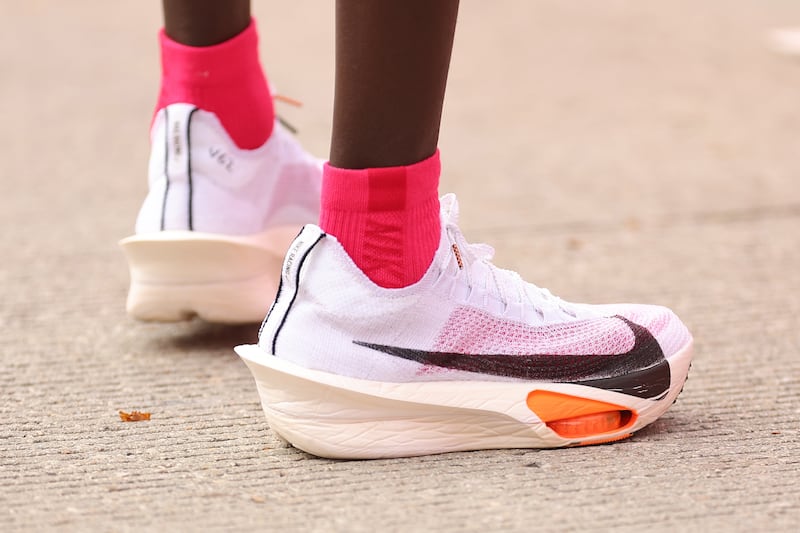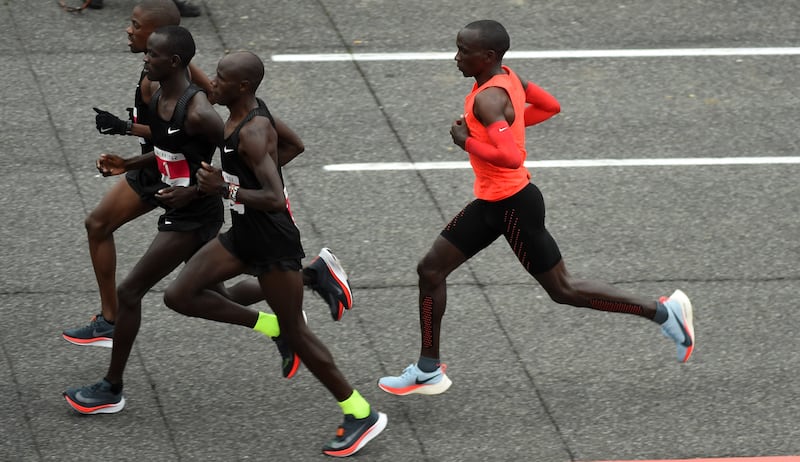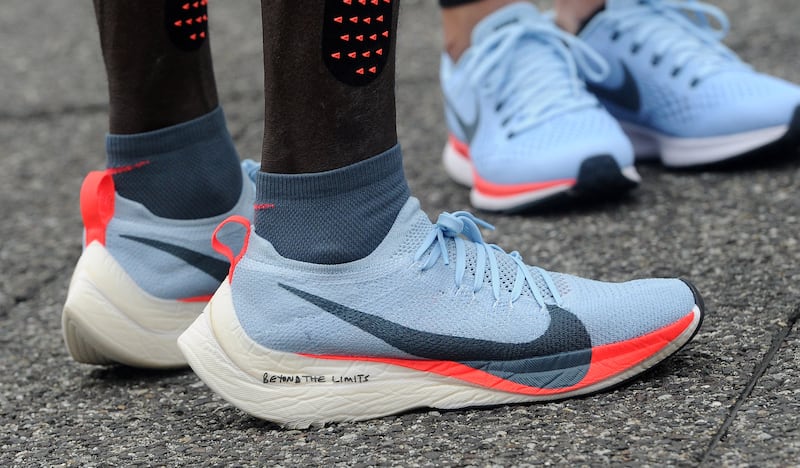Whoever pressed the winter switch around here this week wasn’t messing about, and thankfully after all these years of living in the Dublin mountains there is still no better tried or trusted method of survival than wrapping up in woolly layers and going for a run.
Especially after the boiler blew out on Thursday morning — again. Trying to heat a 200-year-old house with 13-ft high ceilings at this altitude becomes an increasingly desperate exercise in inefficiency. Jack Frost has had some laugh in the window.

There’s also been an extra bounce in my icy morning step thanks to the new Nike Alphafly 3, unquestionably the hottest item in running shoes in the world right now if you’ve somehow managed to get your feet into them. Although not everyone is singing their praises.
The Alphafly 3 are the latest model in Nike’s so-called super shoe range, and first made their name on the feet of Kelvin Kiptum, when less than a year after making his marathon debut, he ran faster than any man in history — taking more than half a minute off the world record with his winning time of 2:00:35 in October’s Chicago Marathon.
Armagh v Galway: Throw-in time, TV details, ticket and team news for All-Ireland football final
Darragh Ó Sé on the Galway football team: The 15 men bidding for All-Ireland glory
Michael Murphy on Armagh: The 15 Orchard men bidding for historic All-Ireland football glory
Olympics opening ceremony: Everything you need to know including times, where to watch and route
Kiptum’s shoes were known then as the Nike Dev 163 prototype, an upgrade and revamp on the Alphafly 2 first made famous by fellow Kenyan runner Eliud Kipchoge, who for the second time in his career broke the world marathon record in Berlin the year before, running 2:01:09.
After bettering that mark by 34 seconds, Kiptum’s world record shoes were promptly put into mass production; Nike also ramped up their marketing game ahead of their global public sale on January 4th, claiming the new Alphafly 3 had already been tested by 300 elite runners around the world, all of whom agreed it was the fastest, most bouncy, and most durable of their super shoe range (and at a tidy €309.99, super expensive too).
That price didn’t put many people off. There is no official clocking on it, but Nike’s latest world-record shoe sold out in world-record time, and most online and retail outlets around the world emptied of their entire stock within 60 seconds.
“Our men’s size range sold out in a minute, with sizes 9½ to 11, going within seconds,” said Nigel Fick of specialist running store Culture Athletics. “We had hundreds of customers refreshing the page, waiting for the 10am launch.”
When they were gone, they were gone, Nike since announcing the Alphafly 3 won’t be back in stock anywhere until April 4th, in a new volt-blue colourway.
My test pair of the Alphafly 3 came in part courtesy of an old running contact who made me swear to his/her anonymity and have been tried on a few runs this week now that my Achilles heel has stopped crying at me. My first impression is that these are the best running shoes I’ve ever worn, and there have been many, even if these have only been tested so far around the flat perimeter of my local GAA pitch.
These are all about efficiency and economy, and from the first flawless fit and feel, run impeccably smooth and responsive, and even when running slow feel teasingly fast.

Nike claim three innovative technological advances in their super shoe design: “a double dose of Air Zoom units helps launch you into your next step; a full-length carbon-fibre plate helps propel you forwards with ease; and a heel-to-toe ZoomX foam midsole helps keep you fresh from start to 26.2″.
In a launch interview with Runner’s World magazine, Bret Schoolmeester of Nike running footwear also said “even the superhuman athletes who are running two hours for the marathon are finding it to be more comfortable and more stable. And that’s going to help athletes that are running 2½, three, four hours in the marathon even more.”
All while conforming to the World Athletics maximum stack height rules (40mm on the road, and 25mm on the track) as agreed in 2020. It’s almost seven years now since Nike introduced their Vaporfly super shoe ahead of the Breaking2 project in Monza in 2017, flaunting every possible legal aid to help Kipchoge run a first sub-two-hour marathon. In the end, Kipchoge clocked 2:00:25, before trying again in Vienna in 2019, wearing the Alphafly 1, and running that unofficial 1:59:40.
Still, some of the conversation around the super shoe is that they’re somehow debasing the sport, given the pace and frequency with which world records are being broken — separate although perhaps not entirely unrelated to the conversation around doping, particularly the current crisis of faith in Kenyan distance-running.

There was fresh evidence for that ongoing debate last Sunday, when Kenya’s Agnes Ngetich smashed the world record for 10km on the road, running a startling 28:46 in Valencia — the first sub-29 minute ever clocked by a woman. Ngetich also passed halfway in 14:13, equalling the world best for that distance, and as soon as she crossed the line and fell to the ground in a mix of agony and elation, some people were pointing not at the clock but the shoes on her feet.
The assumption was Ngetich, sponsored by Adidas, was wearing the new Adizero Adios Pro Evo 1, the €550 super shoe first made famous by Tigist Assefa from Ethiopia when she lowered the women’s marathon world record by more than two minutes, running 2:11:53 in Berlin last September.
As it turned out, Ngetich was wearing the Adizero Takumi Sen 10, a far more modestly priced and traditional racing flat without any carbon-fibre plate or super bouncy foam. Whatever about any doping conversation, which did also come up, that performance can’t be attributed to just the shoes.
Athletics commentator Tim Hutchings has been consistent in his view, that times on the track and road are now incomparable with anything in the recent past. He wrote on X after Ngetich’s 28:46: “I think very few want to ‘ban the shoes’; I think almost everyone knows that — regrettably — it’s gone way beyond that time. Besides, tech advancements are part of life. The problem is too many records have blurred what is great or special.”
Lost in that conversation is the advantage the super shoes also give in running recovery, not just in chasing world records, which is why there is no question whatsoever that they will be warming my feet on my next mountain run.






